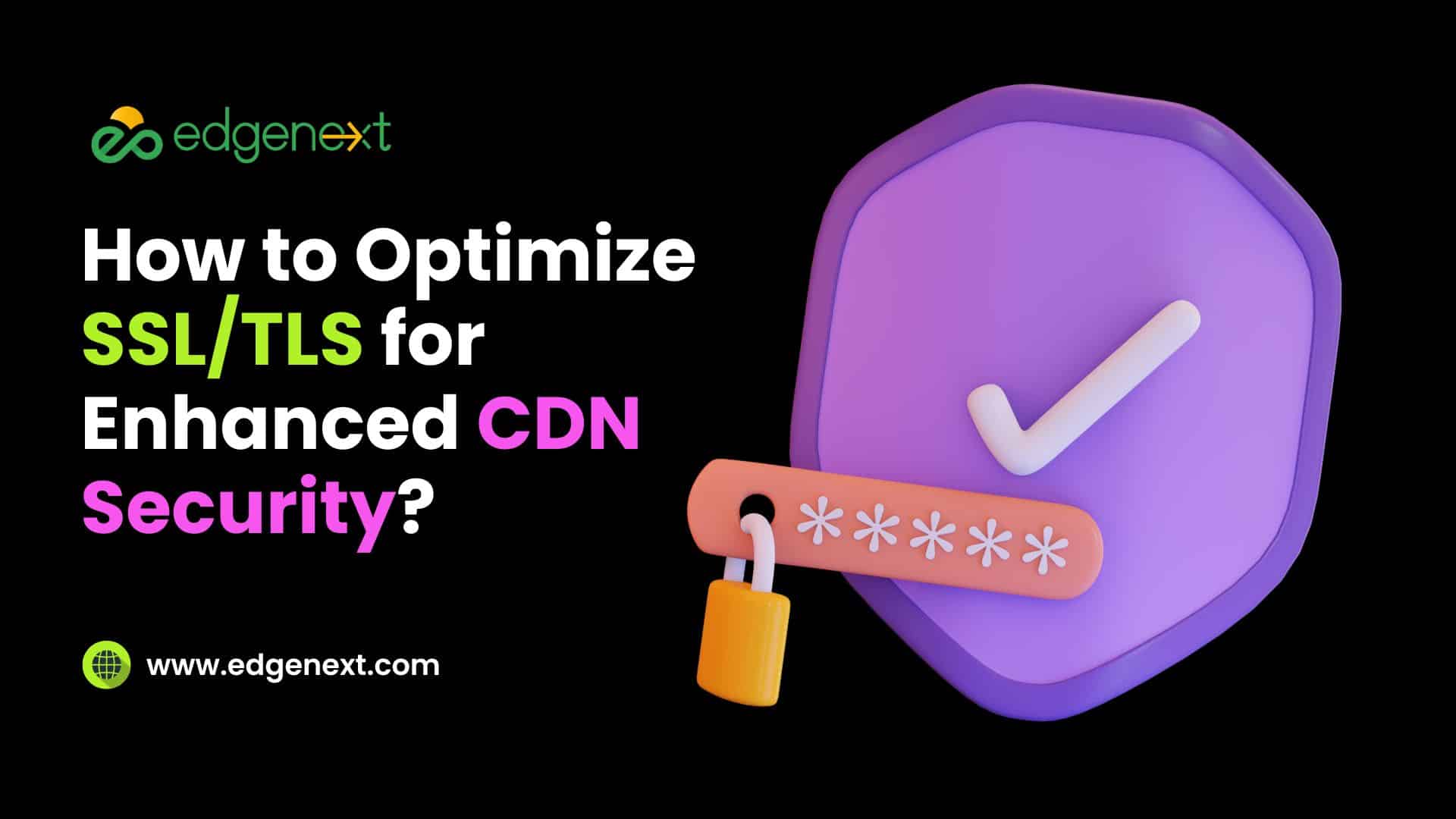
Optimizing SSL/TLS for enhanced CDN security involves configuring strong encryption, managing certificates effectively, and staying up-to-date with the latest security protocols and technologies. The importance of SSL/TLS in securing content delivery networks (CDNs) cannot be overstated. By ensuring data transmitted between the user and the server is encrypted, SSL/TLS helps protect sensitive information from interception and tampering. This blog post will provide detailed guidance on optimizing SSL/TLS to enhance CDN security and performance.
SSL (Secure Sockets Layer) and TLS (Transport Layer Security) are protocols designed to secure data transmitted over the internet. They encrypt the data exchanged between a user’s browser and the server, preventing eavesdropping and data tampering. For CDNs, which handle vast amounts of data traffic, SSL/TLS is crucial in maintaining the integrity and confidentiality of the delivered information.
Implementing SSL/TLS in a CDN environment ensures that all data, whether web pages, videos, or other digital content, is securely transmitted. This is particularly important in protecting user data from cyber threats such as man-in-the-middle attacks. Furthermore, SSL/TLS can enhance user trust and confidence, which signifies a commitment to security and privacy.
SSL/TLS operates through the handshake process, establishing a secure connection between the client and the server. During this handshake, the client and server exchange cryptographic keys and agree on encryption methods. This process ensures that data transmitted during the session is encrypted and secure.
In a CDN environment, SSL/TLS is implemented between the end user’s device and the CDN edge servers and between the edge servers and the origin server. This layered approach ensures that data is encrypted throughout its journey, enhancing overall security. The CDN can also optimize SSL/TLS connections by caching SSL sessions, which reduces the need for repeated handshakes and improves performance.
Configuring SSL/TLS correctly is essential for maximizing security and performance. One of the best practices is to choose strong cipher suites that provide robust encryption. Avoiding weak ciphers and deprecated protocols, such as SSL 2.0 and 3.0, is critical in preventing vulnerabilities.
Another best practice is to enable HTTP/2, which offers performance benefits over HTTP/1.1 by allowing multiple simultaneous streams over a single connection. This reduces latency and improves load times, making it an essential optimization for SSL/TLS in a CDN environment. Keeping SSL/TLS certificates up-to-date and managing their lifecycle effectively is vital to maintaining a secure and trusted connection.
Obtaining SSL/TLS certificates from trusted certificate authorities (CAs) is the first step in ensuring their security. Certificates should be installed correctly and configured to use robust encryption algorithms. Regularly renewing certificates before they expire and revoking compromised certificates are essential practices.
Managing the certificate lifecycle involves monitoring all current certificates’ validity and expiration dates. Automated tools can help streamline this process, reducing the risk of certificates expiring unnoticed. Additionally, implementing certificate pinning can further enhance security by ensuring the authenticity of the server’s certificate.
One common challenge in SSL/TLS optimization is the performance impact of the encryption process. Encrypting and decrypting data can introduce latency, particularly during the initial handshake. To mitigate this, techniques such as session resumption and early data can be employed to speed up the handshake process and reduce latency.
Another challenge is ensuring compatibility with a wide range of devices and browsers. Ensuring the SSL/TLS configuration supports modern encryption standards while maintaining backward compatibility with older devices requires careful planning and testing. Regularly updating and testing the configuration can help overcome these challenges.
Monitoring SSL/TLS performance involves tracking key metrics such as handshake times, connection establishment times, and data throughput. Tools and services can provide detailed insights into SSL/TLS performance, helping identify and address bottlenecks.
Regularly testing SSL/TLS performance is crucial to maintaining optimal security and performance. Conducting penetration tests and vulnerability assessments can help identify potential weaknesses in the SSL/TLS configuration. By continuously monitoring and testing, you can ensure that your SSL/TLS setup remains secure and efficient.
Recent trends in SSL/TLS technology include the adoption of TLS 1.3, which offers improved security and performance over previous versions. TLS 1.3 simplifies the handshake process, reducing latency and enhancing security using more secure cryptographic algorithms.
Another innovation is the QUIC protocol, which combines the security of TLS with the performance benefits of UDP. QUIC is designed to reduce connection times and improve overall performance, making it a promising development for SSL/TLS in CDN environments. Staying informed about these trends and innovations can help you optimize your SSL/TLS setup for enhanced security and performance.
SSL/TLS is a critical component of a comprehensive CDN security strategy. It works alongside security measures such as DDoS protection, Web Application Firewalls (WAF), and DNS security to provide a multi-layered defense against cyber threats. Each measure addresses different security aspects, creating a robust and resilient security posture.
For example, while SSL/TLS protects data in transit, DDoS protection safeguards against volumetric attacks that can overwhelm servers and disrupt services. Similarly, WAFs provide application-level protection by filtering and monitoring HTTP traffic to block malicious requests. Integrating these measures ensures comprehensive security for CDN services.
Optimizing SSL/TLS for enhanced CDN security involves a combination of best practices, regular monitoring, and staying updated with the latest trends and technologies. By implementing strong encryption, managing certificates effectively, and integrating SSL/TLS with other security measures, you can ensure the security and performance of your CDN. Regular testing and monitoring are essential to maintain this optimization over time.
Protect your content and enhance your CDN’s performance with our expert SSL/TLS optimization solutions. Contact EdgeNext today to learn how we can help you secure your data and boost your delivery speeds. Visit our website for more information and start securing your CDN now.

© 2025 EdgeNext Copyright All Right Reserved